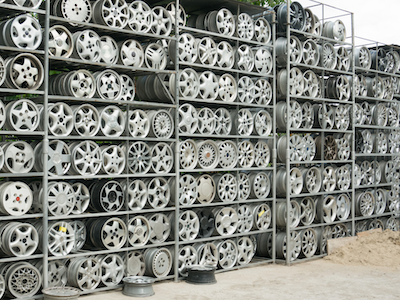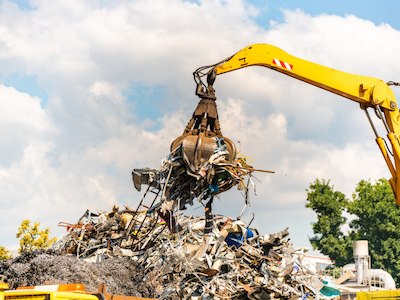Aluminum Scrap Markets

March 28, 2025
New auto tariffs could reshape aluminum demand
Written by Gabriella Vagnini
Here’s one that flew under the radar for a lot of people in aluminum: the White House just rolled out a 25% tariff on imported autos and certain parts. Most headlines are focused on what it means for car prices or the U.S.-China standoff. But let’s talk about what this really means for our world of aluminum.
Automakers have been shifting toward aluminum for years now. Less weight means better fuel efficiency, and in this EV-hungry, emissions-conscious market, that’s a big deal. The global automotive aluminum market is booming, projected to nearly double over the next decade. But these new tariffs? They’re a curveball.
Here’s why: a lot of automakers build vehicles or major components overseas. Some even rely on foreign systems for aluminum processing or specialty parts. If those imports get hit with a 25% duty starting April 3, automakers are looking at a decision, either eat the cost, raise prices, or rework supply chains fast.
And the pressure is especially intense in my home state of Michigan, known as the auto capital of the world. The state is also home to the ‘Big Three‘ auto makers – General Motors (GM), Ford and Stellantis (formerly Chrysler). With all three headquartered in Michigan, it only makes sense that 98 out of top 100 auto suppliers to North America have a presence in Michigan. MichAuto estimates Michigan’s mobility industry to be generating $348 billion in annual economic output, much of which is now under threat.
Tariffs on vehicles go into effect April 3, while auto parts like engines, transmissions, and electrical components will follow by May 3. But the real complication? The Commerce Department is still ironing out the rules, like how much of a part’s value counts as U.S. made, and what else might fall under the tariff scope in the next 90 days. That uncertainty alone is enough to delay planning, sourcing, and production decisions.
Now, this could go one of two ways for aluminum suppliers.
Best case? More automakers double down on domestic production, meaning more U.S. sourced aluminum gets used, rolling mills, extrusion shops, billet makers, secondary smelters could all see stronger demand. Hyundai’s already moving in this direction with its $5.8B plant in Louisiana as they are said to be invest $21B in the U.S. in part to avoid future tariffs.
Other manufacturers are weighing similar moves. But those don’t happen overnight. According to a Tier 1 executive quoted by Crain’s, even moving production to an existing plant could take a year. Building a new factory? Try 18 to 36 months.
And while most economists are warning this will drive up vehicle prices and eat into automaker profits, not everyone agrees. UAW President Shawn Fain has backed the tariffs, yes, the same guy who campaigned against Trump in 2024, calling them a tool to hold companies accountable and push production back to underused plants here at home. He’s arguing this could bring back thousands of jobs and insists companies don’t have to raise prices, even if input costs go up. But one has to wonder what his formula is behind that assessment.
That’s quite the stance, especially when industry forecasts are saying the opposite. But it does raise a question: what if this really is the strategy? What if the hope is that tariffs will force automakers to reshore fast, like, flip-a-switch fast, and keep production moving without hurting profits? What if the assumption is that the aluminum, the labor, the factory space, it’s all just sitting here waiting to be turned back on?
If that’s the plan, it’s might just be a risky one. Production shifts take time. Investment takes time. And aluminum suppliers caught in the middle may be the ones absorbing the whiplash if things don’t play out as they hoped.
Another thing to watch: this could ignite new trade tensions. If trading partners retaliate, we may be looking at more friction for U.S. aluminum exports, think billet, sheet, alloyed castings, or even recycled scrap. Europe, Mexico, Canada, they’re all watching this closely.
Bottom line: this is bigger than just about cars. It’s a signal that trade policy is back on the table in a big way. And for those in the aluminum market, it’s time to ask: Are we ready for another round of supply chain realignment?
If you’re supplying auto-grade aluminum, keep your eyes on April. These tariffs are coming fast, and depending on how OEMs respond, it could reshape where and how they source aluminum for years to come.







